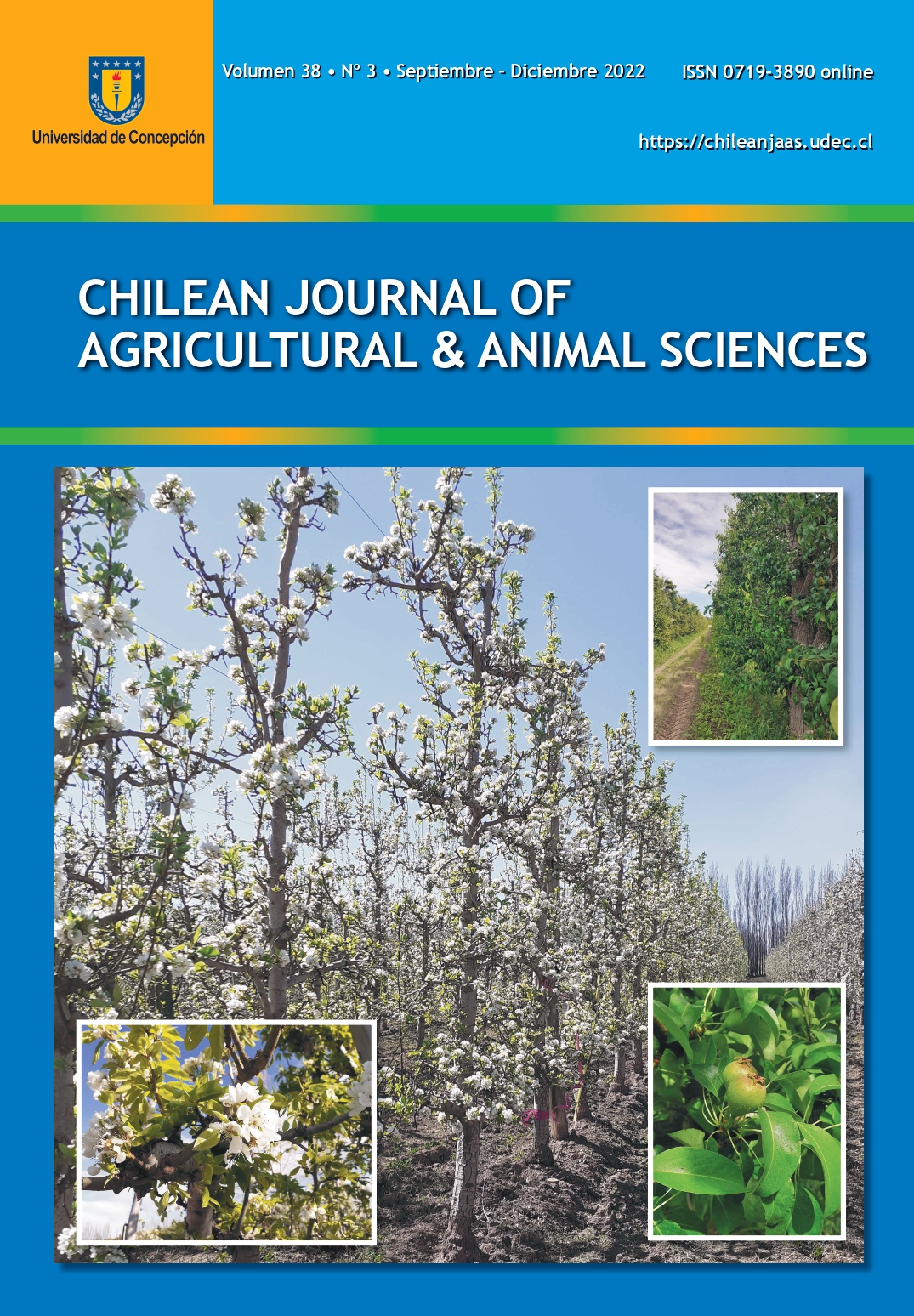CHARACTERIZATION OF GROWTH OF SOCORRO ISLAND MERINO LAMBS
DOI:
https://doi.org/10.29393/CHJAA38-34STVA10034Palabras clave:
Feral sheep, genotype, growth, non-linear models, parity, sexResumen
The aims of this study were to evaluate the effect of genetic and non-genetic factors on the growth of Socorro Island Merino lambs and to model their growth curve using nonlinear mathematical models. The weight of 41 Socorro Island Merino lambs was recorded at birth and at 45, 90, 135, 180, 225, 270, 315 and 365 days of life from May 2019 to September 2021. The effects on growth of sex, genotype, year of birth, and parity of the dam were analyzed. Four non-linear models (Brody, Logistic, Gompertz and von Bertalanffy) were fitted for determining the best model to describe growth curve. Birth weight and pre-weaning growth rate were not affected (P > 0.05) by any of the factors studied, while weaning weight was only significantly affected (P < 0.05) by sex. Year of birth significantly affected (P < 0.05) post-weaning growth rate and weight of the lamb from 270 days, while sex significantly affected (P < 0.05) weight at 315 days. The Gompertz and Brody models were the best fitted to describe growth curves of lambs. Purebred males showed a larger response to increasing levels of energy-protein supplementation, while they had greater mature weight and lower maturation rate compared to females and crossbred males. In conclusion, knowledge of growth and factors influencing growth pattern can help implement appropriate management strategies and make decisions aimed at the conservation of Socorro Island Merino lambs.
Descargas
Publicado
Cómo citar
Número
Sección
Derechos de autor 2022 Paola Castillo, Rafael Macedo, Victalina Arredondo, Carlos Haubi, Mauricio Valencia

Esta obra está bajo una licencia internacional Creative Commons Atribución 4.0.







